How To Tell If Damascus Steel Is Real
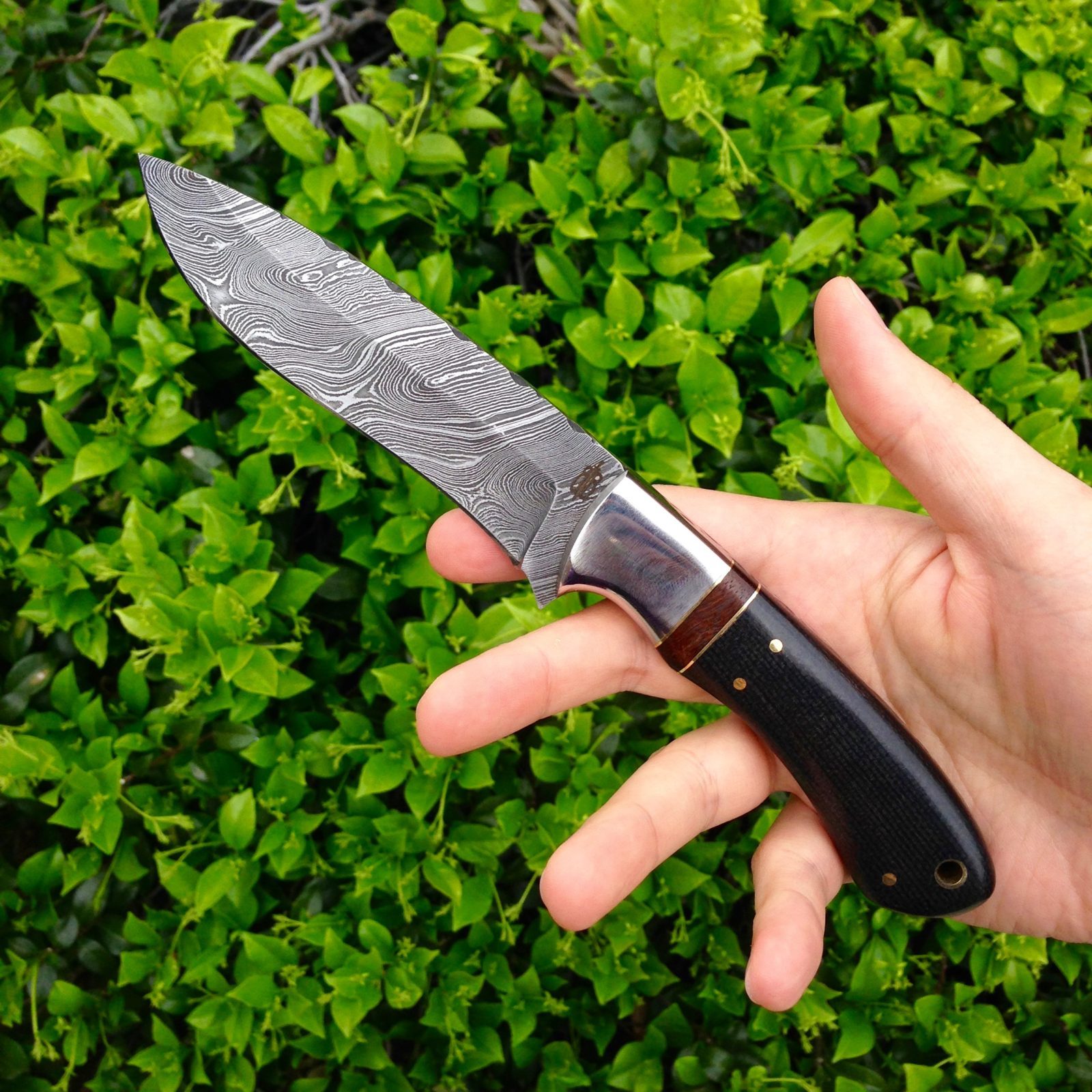
The pocketknife world is plagued with fakes and frauds.
People on eBay are trying to pass off $400 Sebenzas as real and sellers on Amazon are unknowingly selling imitation CRKT and SOGs to unsuspecting customers.
Because of all the tricksterism plaguing the pocketknife community, I often get asked whether a knife is real or imitation. While I recently wrote a guide on how to spot a counterfeit pocketknife, it didn't address another popular question — is my Damascus knife a imitation?
Damascus knives are condign more popular and more prevalent from the most popular knife brands like Spyderco (with the Endura and others) to bottom known brands like BucknBear.
What makes people fifty-fifty more dislocated about the legitimacy of Damascus steel is the vast price differences. Could a $50 knife with Damascus steel be real when you come across other Damascus blades topping the $500 mark?
Let'south dig deeper.
What is Damascus?
Earlier determining whether your Damascus is fake or real, nosotros should kickoff define what Damascus actually is.
Damascus is that wavy design in steel that looks exotic and downright gorgeous.
I'm simplifying this a ton, merely there are two means to go "real" Damascus steel: Wootz and pattern-welded steel.
Wootz steel
The first real Damascus steel was introduced around the tertiary century and was known past Wootz (and other names). It was a crucible steel that was fabricated by melting pieces of iron and steel in dirt pots.
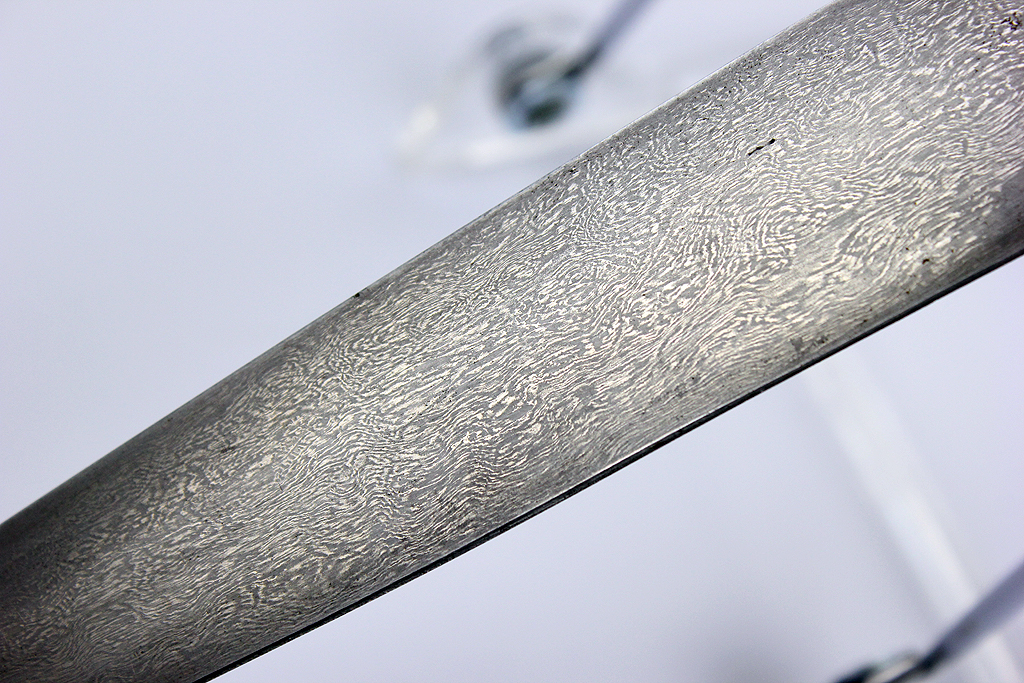
Here is an fantabulous layman's caption from The Association For Renaissance Martial Arts:
It'due south produced by melting pieces of iron and steel with charcoal in a reducing temper (defective oxygen). During the process, the metals absorb carbon from the charcoal and the resulting alloy is cooled at a very slow rate. This produces a material with a visible crystalline construction of varying carbide contents. Forging the textile into a desired shape (such equally a sword blade) alters the crystalline structure into the familiar waving or watered blueprint that Damascus steel is known for. This technique is extremely work intensive and requires a loftier caste of skill to go along the necessary temperatures constant throughout the process.
This type of steel originated in India and was passed down past blacksmiths throughout the East. The steel was somewhen introduced to Damascus, Syria. There are many theories why it is called Damascus, simply we won't go into it here.
The truthful way to make Damascus this style was lost somewhere in the 17th century as those handed down the noesis died out. People in modern times accept mimicked the process and likely take come up close to recreating the original Damascus.
However, the soil composition and chemical properties of the steel used in the specific region brand truly recreating that original Damascus probable impossible.
Pattern-welded steel
This is what people these days telephone call Damascus. It represents 99.9 pct of all the Damascus steel you lot come across.
This process involves forging two or more types of steel that complement one another and folding the steels together. Then, some acid etching is done to dilate the differences in the steel. This creates a wavy pattern that closely resembles the Damascus of sometime.
Pattern-welded steel fell out of fashion for centuries before being brought back to modernistic times singlehandedly by the ingenious Bill Moran in the 1970s.
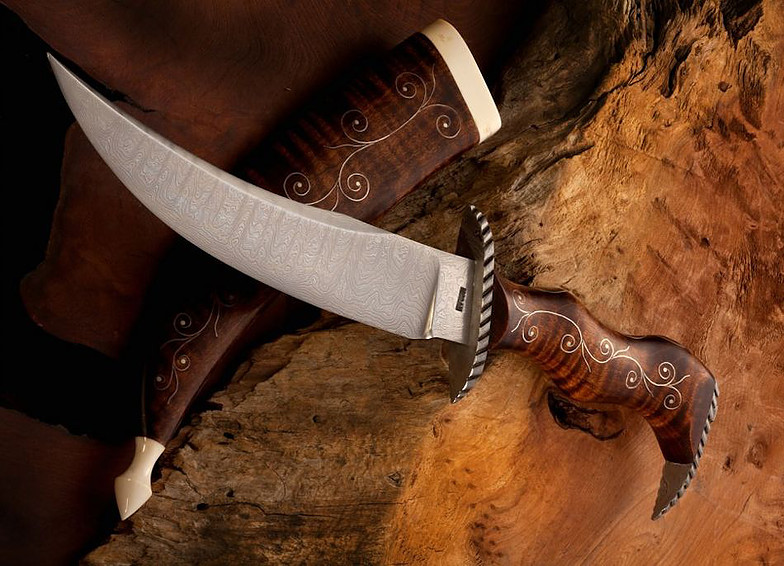
Here is an prototype of the Moran Fighter from The William F. Moran Jr Museum
You will also sometimes see knives that say VG-10 Damascus. In this procedure, there is a VG-10 core with Damascus steel on either side. The steel is laminated in the mold of San Mai, in which three layers of steel are sandwiched together.
If you can't wrap your head effectually what I'm talking about, watch this video from Walter Sorrells about the 2 types of "real" Damascus steel.
Then, Is My Damascus Blade Real?
Some people withal insist that any Damascus steel made through the blueprint-welded method and etching is not real Damascus. Those people are simply wrong.
If you have a Damascus blade that was made with design-welded steel and some acid etching, then you exercise indeed have a real Damascus bract. Considering pretty much every single knife on the marketplace that says it's Damascus is pattern-welded steel, it'south not a large deal.

However, in some rare cases, people will try to laissez passer off regular stainless steel with no layering as Damascus by printing a design on the bract. These are pretty easy to spot because they either don't look like Damascus or the pattern could simply rub off.
Real Damascus is intrinsic to the steel itself merely faux Damascus is only a facade.
For a quick look at a fake Damascus knife, accept a look at this knife presented past the great Nick Shabazz and heed to how he determined its inauthenticity (starting at 10:01 and ending at xi:40) :
You can surprisingly add carving that looks similar to Damascus to any old stainless steel knife with some boom smoothen and ferric chloride.
But many people still have concerns well-nigh the authenticity of their Damascus, so I'll reply some common questions people accept most the steel.
Why Isn't the Damascus Visible Everywhere on the Bract?
A few years ago, I wrote a review of a BucknBear Damascus Hunting Knife. The comments are filled with people challenge that the knife I reviewed is a fake because you lot can't see the pattern all over the bract.
Hither's 1 comment:
The Damascus pattern only exists on the primary sides of the knife. No blueprint shows on the edges or the dorsum of tang, i.due east., the area between two sides of the handle.
True Damascus steel should be like those cakes that have colorful layers. No thing where you cutting the block, the surfaces show the pattern.
There is a reason the pattern is non conspicuously visible on sure parts of a blade. Either the pattern was polished out after etching or it simply wasn't acid etched. This video from BowieMaker shows how a Damascus blade does not look different than whatever other pocketknife… until you dip information technology in acid for even a few seconds.
But the truth is, yous can encounter the pattern in the steel, just very lightly. If there is a part of the blade that is non etched, you should nevertheless be able to see the pattern, admitting lightly, in different low-cal.
I can run into the blueprint on the spine and file piece of work of the BucknBear I have. It's just not very visible.
What is that Residue Coming Off the Bract?
If you clean your Damascus blade you may notice some black balance coming off the blade. You lot may be thinking to yourself that this must be the print coming off. That's probably non the case.
That is likely residuum from the acid etching. That does non mean you have a fake.
Why is At that place a Huge Cost Difference for Damascus?
Oh, you got a Damascus steel folder for just $40? Information technology must be a fake.
Again, that'south non truthful.
Just like whatever other pocketknife, Damascus varies in quality. Damascus handmade by custom knife makers with a care and attention to item will cost much more than knives made in Pakistan.
For instance, BucknBear has become known for making some great Damascus steel knives at relatively inexpensive prices. I reached out to them to confirm that their Damascus is 100 percent existent and that their knives come up from Pakistan.
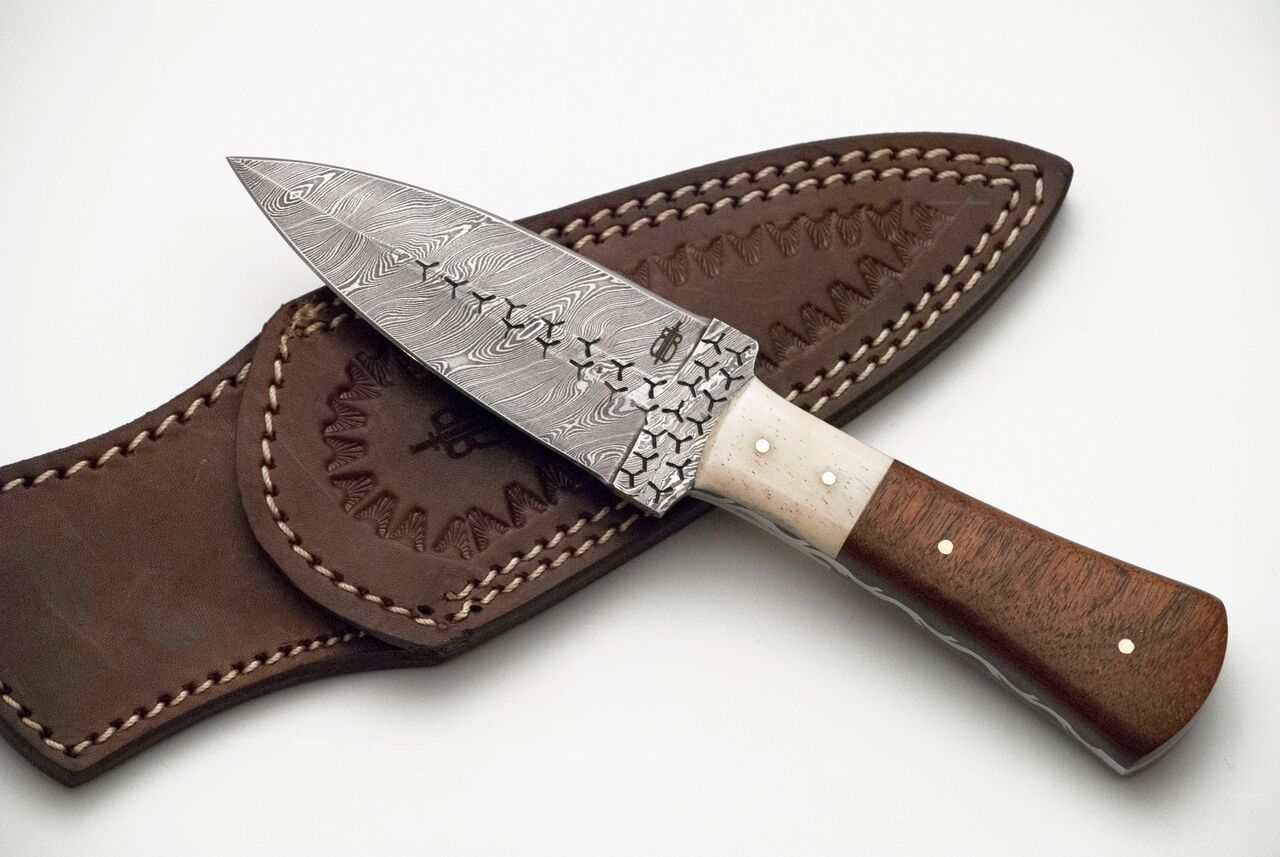
Pakistan is a region known for making inexpensive Damascus blades. Fifty-fifty though the fine art of Damascus steel originated from that region, yous can get some pretty poor quality knives if you don't choose right. And just every bit with annihilation at cheaper prices, mileage may vary.
However, a low toll does non necessarily mean a imitation. Don't buy off eBay, simply if you do, don't exist surprised to see a Damascus fixed blade on there from Pakistan for a few bucks. Beware of quality control bug and worse.
Of course, discerning the quality from junk is hard, especially when places don't tell the steel used to make the Damascus.
Why Do Damascus Patterns Await Then Different (or the Same)?
There are many types of patterns you can accomplish during the process of making pattern-welded steel. Many of these have different names and looks — sharktooth, basketweave, draft, dot matrix, and more than more. (Hither's a skillful look at some of the different patterns.)
Yous tin can attain these specific patterns by folding the steel and manipulating information technology in very specific ways.
Probably the near pop pattern is the "random" blueprint, which is why the Damascus may await different from ane pocketknife to the other. Either way, virtually Damascus has its own personality and look.
How Do I Actually Tell If I Have a Simulated Damascus Knife?
If you lot're really determined on knowing whether your Damascus is existent or faux, the only real way to tell is to completely smooth the pattern out of the blade. You can utilise sandpaper to get that satin look. One time it's nice and polished, compose it with ferric chloride or muriatic acid.
(I recommend reading actual knife makers for amend advice and step-by-stride instructions.)
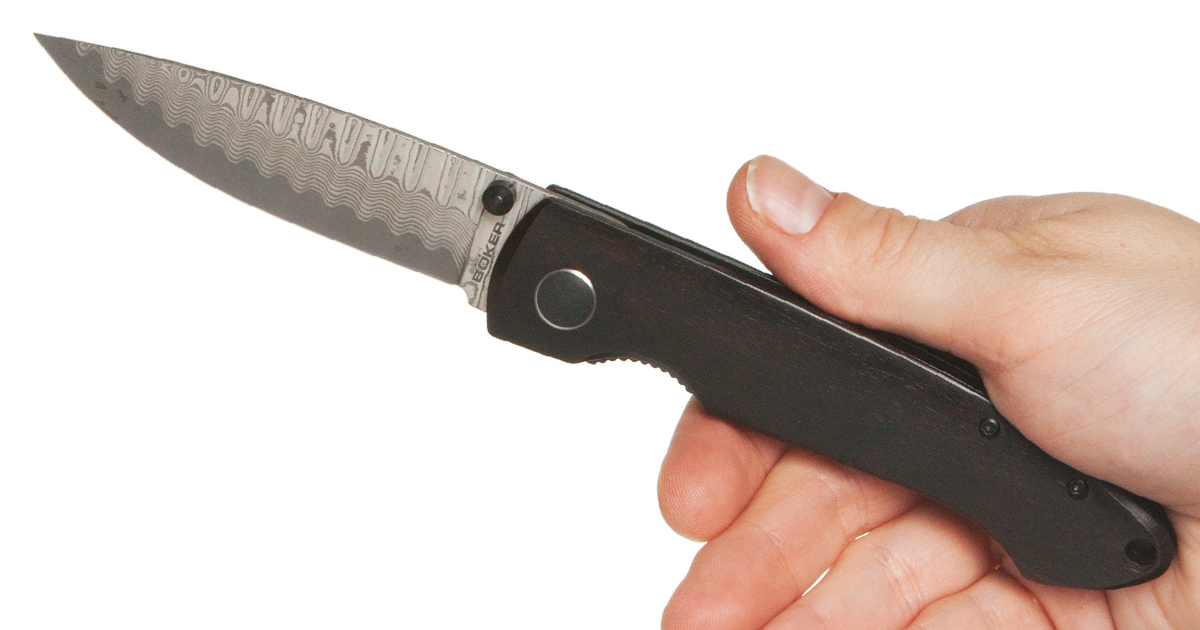
If the Damascus pattern comes back, it's real. If not, you have a imitation on your hands.
Because Damascus can exist washed the real way pretty cheaply, finding a fake Damascus is rarer than you might call up. Still, information technology's always expert to be informed and aware of what to wait for.
Source: https://blog.knife-depot.com/how-to-tell-real-damascus/

0 Response to "How To Tell If Damascus Steel Is Real"
Post a Comment